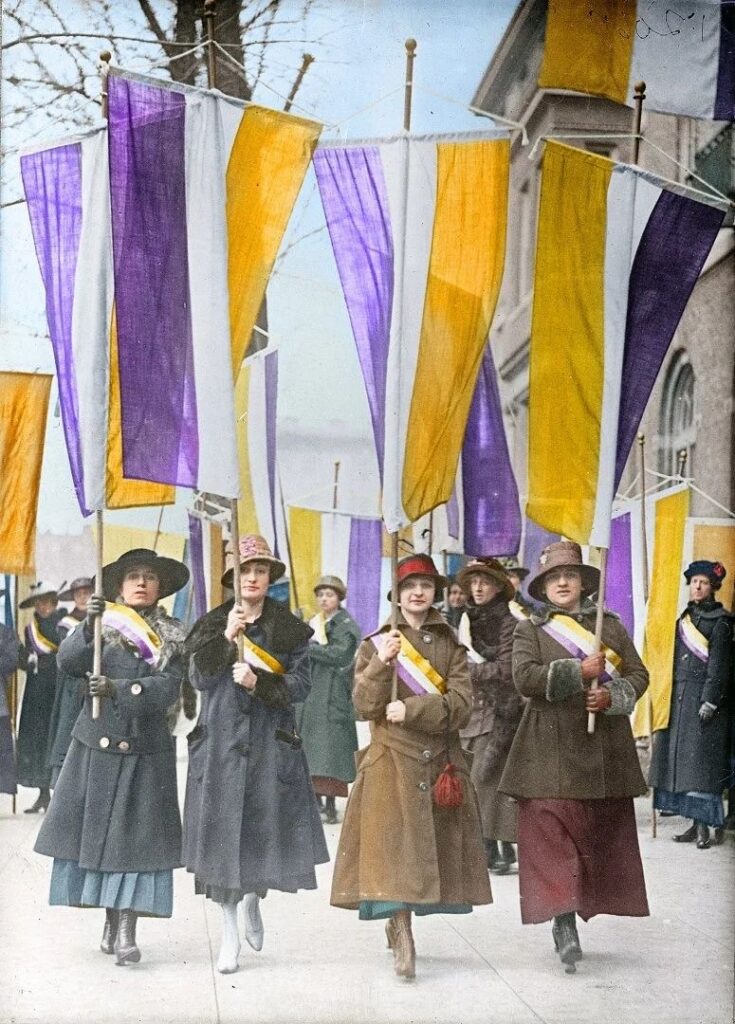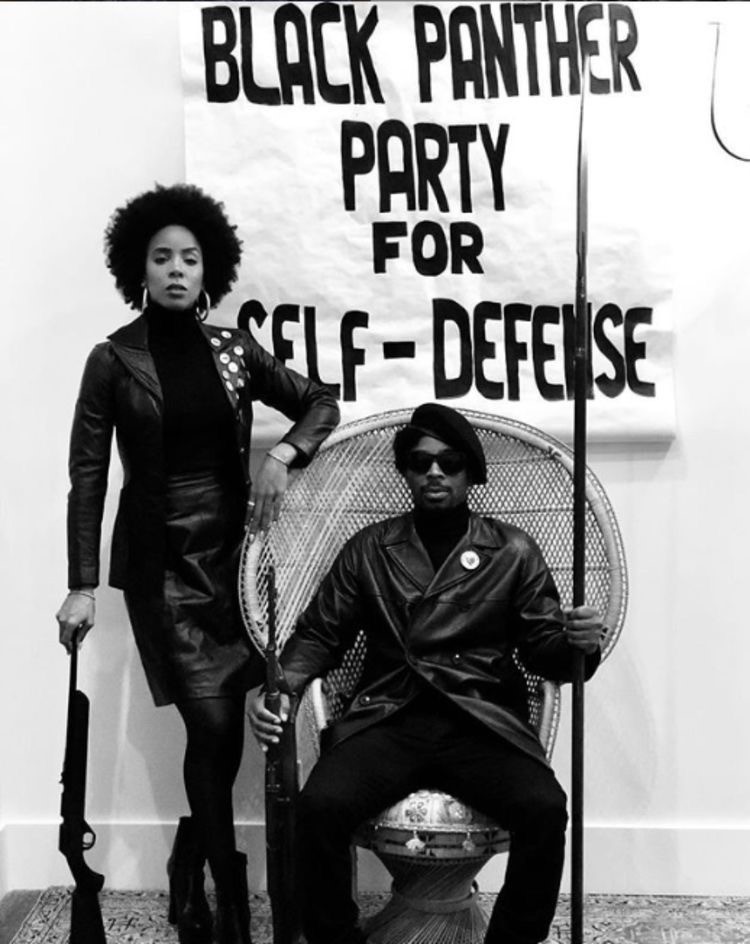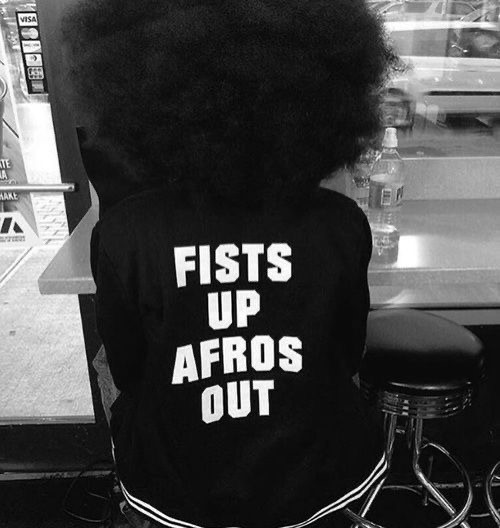In a universe where every stitch, fold, and choice of fabric holds its own narrative, garments transcend their practical role and morph into a potent form of political expression. From the suffragettes in the early 20th century to the modern-day Black Lives Matter movement, fashion has played a pivotal part in amplifying the voices of protestors and those who challenge the status quo.

Garments have always been an important form of self-expression, but their transformation into a political tool is a more recent development. The suffragette movement utilised clothing’s ability to promote women’s voting rights in the early 1900s. Suffragettes not only became aesthetically united by donning colours with deep symbolic meaning—purple for loyalty, white for purity, and green for hope—but also reflected their common objective of breaking social standards. They demonstrated their tenacity and commitment by this visual harmony, forcing society to directly address their requests.

Zooming forward to the 1960s civil rights movement, fashion continued to serve as a vehicle for change. The Black community used apparel to draw attention to the injustice and institutional racism they faced. The advent of afrocentric fashion during this time demonstrated a reclaiming of identity and ancestry, contradicting the centuries-old Eurocentric criteria of beauty. Think of the Black Panthers, who wore berets and leather jackets not just for fashion but also as a sign of their opposition to injustice. They dressed with pride and used their attire to visually oppose the pervasive racial injustice.
In the dynamic canvas of contemporary times, the Black Lives Matter movement has expertly woven the art of clothing into a passionate plea for justice and equality. The powerful refrain “I Can’t Breathe,” boldly displayed on t-shirts, serves as a poignant stroke, commemorating George Floyd’s tragic passing while shedding light on systemic gaps. These shirts function not only as memorials but also as catalysts, sparking conversations that might otherwise slip away. Hoodies, once unfairly associated with suspicion, have experienced a transformative resurgence within the movement, emerging as symbolic threads that intricately connect unity and remembrance.
The influence of fashion on protests has expanded beyond its physical limitations in an age characterised by social media and global interconnection. Images featuring the creative signs, elaborate homemade outfits, and eye-catching accessories worn by protesters are quickly shared online, amplifying their message for a large audience. Now, the combination of fashion and political expressions is embodied by the hashtag #FashionActivism. Whether at Pride parades or climate change protests, clothing has the power to cut across language barriers and connect with people from all different cultural backgrounds.

The complicated dance between fashion and politics, on the other hand, is fraught with complexities. According to critics, the commercialization of clothing with protest-related themes runs the risk of undermining the underlying motivations behind these expressions. Brands may be seen as lacking authenticity and taking advantage of the situation if they join the bandwagon for commercial gain without genuinely supporting the causes they promote.
Clothing takes the stage as a silent but powerful conductor of emotions in the big symphony of demonstrations. Fashion unfolds as an ever-enthralling canvas for political declarations, from the suffragettes’ delicate use of colour to tell their story of empowerment to modern activists’ vivid embroidery of justice slogans. Clothing makes a powerful wand out of plain fabric, organising single murmurs into a harmonious chorus of collective voices, whether it is the reclaiming of identities, highlighting of injustices, or weaving of unshakable unity. One aspect of the ongoing dance between activism and fashion is as clear as a brushstroke, the clothes we wear not only represent our worldview but also serve as a spell that affects how others see us.
Sources
- https://www.linkedin.com/pulse/political-power-fashion-brands-study-societal-nikojavakhishvili?utm_source=share&utm_medium=member_ios&utm_campaign=share_via
- https://amp.theguardian.com/fashion/2021/sep/26/loud-and-clear-the-art-of-political-dressing-and-making-a-fashion-statement
- https://www.matterprints.com/journal/community/is-fashion-political/
- https://thewilldowntown.com/fashion-as-a-political-statement-how-clothing-can-convey-powerful-messages/
- https://artfulliving.com/top-political-fashion-moments-of-all-time/




